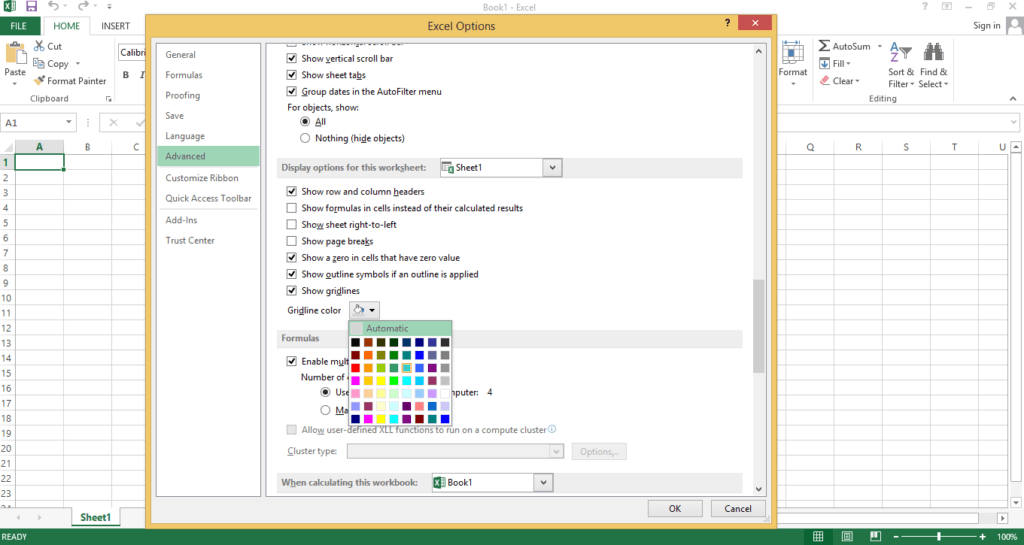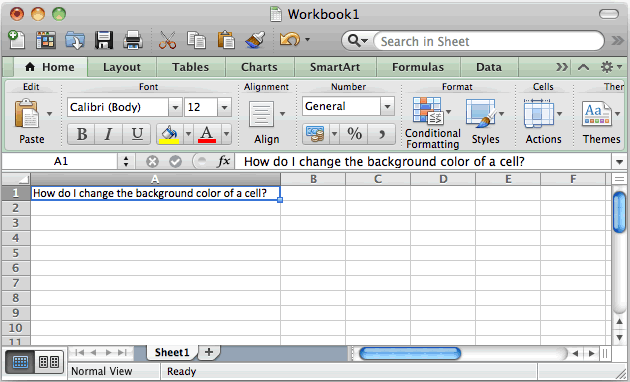
- #Change the cell outline weight in excel for mac how to
- #Change the cell outline weight in excel for mac for mac
- #Change the cell outline weight in excel for mac install
- #Change the cell outline weight in excel for mac mac
#Change the cell outline weight in excel for mac install
If you choose a replacement font for the spreadsheet, then later install the missing font, your spreadsheet continues to use the replacement font until you replace it with the font you installed.
#Change the cell outline weight in excel for mac mac
If you have the missing font and want to install it on your computer, use Font Book, available in the Applications folder of your Mac (see the Font Book User Guide for instructions). In the notification, click Show and choose a replacement font. When you open a spreadsheet that uses fonts not installed on your computer, a missing font notification appears briefly at the top of the spreadsheet. The replacement font uses the same size and weight as the font it replaces. The font is replaced everywhere it occurs. If the font is listed as a missing font, also choose a typeface. The following methods are available through a new workbook.To change a font everywhere it occurs in your spreadsheet, you can replace it with another font.Ĭhoose Format > Font > Replace Fonts (from the Format menu at the top of the screen).Ĭlick the double arrows to the right of the font you want to replace, then choose a replacement. The Excel::Writer::XLSX module provides an object oriented interface to a new Excel workbook.
#Change the cell outline weight in excel for mac how to
Those of you who read the instructions first and assemble the furniture afterwards will know how to proceed.
#Change the cell outline weight in excel for mac for mac
Note, this doesnt equate exactly to the Excel for Mac pixel size since it is based on the original Excel 2007 for Windows sizing. The units are pixels and the default size is 1073 x 644. This method is currently only useful when setting the window size in Excel for Mac 2011. There are many examples that come with the distribution and which you can use to get you started. In later versions of Excel for Windows this interface was dropped.

Okay, so there is actually a zeroth step as well, but use module goes without saying. This will create an Excel file called perl.xlsx with a single worksheet and the text 'Hi Excel!' in the relevant cell. $worksheet->write( 'A1', 'Hi Excel!' ) # Step 3 $worksheet = $workbook->add_worksheet() # Step 2 My $workbook = Excel::Writer::XLSX->new( 'perl.xlsx' ) # Step 1 Like this: use Excel::Writer::XLSX # Step 0 Add a worksheet to the new workbook using add_worksheet(). So for those of you who prefer to assemble Ikea furniture first and then read the instructions, here are four easy steps:ġ. As a result there is a lot of documentation to accompany the interface and it can be difficult at first glance to see what it important and what is not. QUICK STARTĮxcel::Writer::XLSX tries to provide an interface to as many of Excel's features as possible. Excel::Writer::XLSX and Spreadsheet::WriteExcelĮxcel::Writer::XLSX uses the same interface as the Spreadsheet::WriteExcel module which produces an Excel file in binary XLS format. Text, numbers, and formulas can be written to the cells. The text is immediately separated into two lines in a cell. 2) Press the button 'ALT' together with the 'ENTER' key. Multiple worksheets can be added to a workbook and formatting can be applied to cells. Here is how: 1) Place the cursor after the word 'Revenue' (either by editing the cell using the function key F2 OR point the mouse button at the formula bar immediately after the word 'Revenue' and click on the left mouse button). The Excel::Writer::XLSX module can be used to create an Excel file in the 2007+ XLSX format. # Write a number and a formula using A1 notation $worksheet->write( 1, $col, 'Hi Excel!' ) $worksheet->write( $row, $col, 'Hi Excel!', $format ) # Write a formatted and unformatted string, row and column notation. My $workbook = Excel::Writer::XLSX->new( 'perl.xlsx' ) To write a string, a formatted string, a number and a formula to the first worksheet in an Excel workbook called perl.xlsx: use Excel::Writer::XLSX Adding the VBA macros to a Excel::Writer::XLSX fileĮxcel::Writer::XLSX - Create a new file in the Excel 2007+ XLSX format.insert_image( $row, $col, $filename, ).write_comment( $row, $column, $string.repeat_formula( $row, $col, $formula, $format ).write_boolean( $row, $column, $value, $format ).write_array_formula($first_row, $first_col, $last_row, $last_col, $formula, $format, $value).




 0 kommentar(er)
0 kommentar(er)
